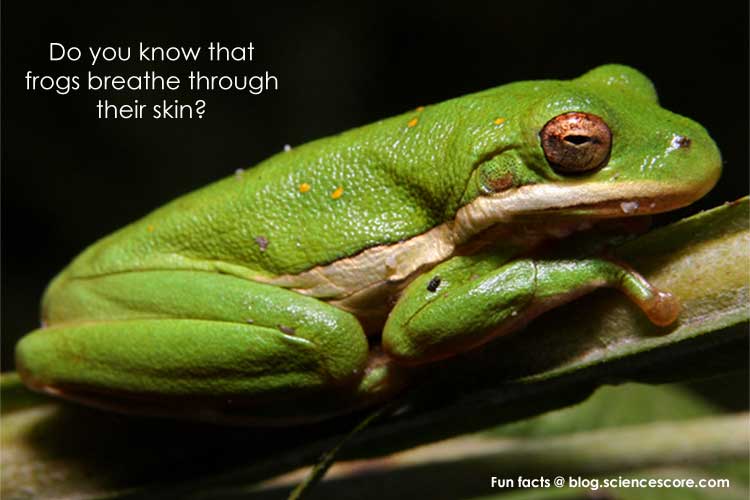This week, we did some research on the natural features of a frog which makes it special and different from the other amphibians out there.
Before that, we shall update you with Roger's condition.
Roger is doing fine! :D
According to Biology Technology Resources,
"The frog's skin is smooth and moist, fairly thin, and well supplied with blood vessels which branch into a fine network of thin-walled capillaries. Oxygen from the air or water, dissolves in the film of moisture over the skin, diffuses through the skin, through the walls of the blood capillaries and into the blood. Here it combines with the red pigment, haemoglobin, and is carried away in the circulation, back to the heart and then round the rest of the body. Excess carbon dioxide is eliminated from the blood in a similar way, diffusing out of the blood vessels, through the skin and into the atmosphere. The skin is effective for breathing on land or in water and is in use continuously."
Coming across this paragraph, we were very keen and interested to know more on the frog's respiratory system through its skin. We then wondered, what if we are able to mimic this smooth and moist skin of a frog, allowing human to also breathe naturally under the sea without needing an oxygen tank. Imagine if the mimicking is successful, divers will no longer need to carry the oxygen tanks, when they can just breathe naturally by just putting on a "layer" of breathing mechanism skin on their body. How cool will that be?
However, we do know it may not be as simple as it sounded. Many of the respiratory conditions have to be considered as humans and amphibians do not completely share the same respiratory methods. This had led us to research deeper on the frog's skin and the breathing mechanism behind it.
According to Science Score,
"But frogs can also lose water though their skin very easily, which is why most of them need to stay near water. If they want to leave the water, they have to have special adaptations that let them do it. Some frogs feel very slimy if you touch them; that’s because their skin secretes a thick mucous to help stop water from escaping.Other frogs have different ways of keeping their water in. Tree frogs, for example, have thicker skins than most frogs. Toads have even thicker skins, which means they can spend much more time away from water."
According to Brown edu,
"While completely submerged all of the frog's respiration takes place through the skin. The skin is composed of thin membranous tissue that is quite permeable to water and contains a large network of blood vessels. The thin membranous skin is allows the respiratory gases to readily diffuse directly down their gradients between the blood vessels and the surroundings. When the frog is out of the water, mucus glands in the skin keep the frog moist, which helps absorb dissolved oxygen from the air.A frog may also breathe much like a human, by taking air in through their nostrils and down into their lungs. The mechanism of taking air into the lungs is however sligthly different than in humans. Frogs do not have ribs nor a diaphragm, which in humans helps serve in expand the chest and thereby decreasing the pressure in the lungs allowing outside air to flow in."
From the readings, it is known that the semi permeable membranous tissue underneath the frog's skin allows the respiratory gases to diffuse down the gradients between the blood vessels and the surroundings. The research will now focus on the anatomy of the frog's membrane and breathing mechanism - how oxygen is extracted from the water molecules and diffuses into the capillary though the semi-permeable skin.
Thank you for reading!
Stay tuned till next week!
http://www.biology-resources.com/frog.html
http://braininflator.com/frogs-breath/
http://blog.sciencescore.com/did-you-know-that-frogs-breathe-through-their-skin/
http://www.brown.edu/Departments/Engineering/Courses/En123/MuscleExp/Frog%20Respiration.htm





No comments:
Post a Comment